Transcription of microJoining Solutions – microTips™
1 microJoining Solutions microTips 5563 Hallowell Avenue Arcadia, CA 91007 Phone: 626-444-9606 Fax: 626-279-7450 Email: Web: microTip_Plating Issues_2005 05 Micro Joining Plating Issues By David Steinmeier General Metal plating over a base metal provides corrosion protection and enhances product appearance. Plating can also serve as a diffusion barrier to prevent other metals from mixing and as an intermediary layer to accept solders or brazing alloys. Gold and silver plating enhance surface conductivity. Electrolytic plating requires the use of an electric current to transfer the plating material to the base metal. Electroless plating is strictly a chemical process.
2 Military/Federal (MIL) Standards and AMS derivative standards cover the most commonly used plating process in the United States. ASTM and ISO standards cover testing issues such as plating thickness and porosity as well as other attributes. Welding Processes Plating complicates all pulsed YAG laser and resistance welding processes. Common welding problems resulting from the plating process include: Expulsion or spitting of low melting point plating metals from the weld site. Creation of brittle intermetallic alloys in the weld joint. Light to severe resistance welding electrode sticking. Pulsed YAG Laser Welding Pulsed YAG laser welding produces high peak power, short duration weld pulses which vaporize low temperature plating such as cadmium, lead, tin, tin/lead solder, and zinc, resulting in particle expulsion, voids in the base metal and heat affected zone (HAZ), and possible brittle intermetallic weld joints.
3 Electrolytically deposited nickel-plated steel parts can be successfully laser welded. However, electroless nickel plating is much more problematic because of the high phosphorus content ranging from 4 to 12 %. The phosphorus tends to migrate to the grain boundaries during weld cooling, resulting in hot cracking or disintegration of the weld. Minimizing the phosphorus content helps to reduce hot cracking. Resistance Welding Compared to pulsed YAG laser welding, resistance welding accommodates a wider range of plating materials because the weld energy density is generally lower and the weld pulse can be profiled more easily to reduce particle expulsion.
4 However, low temperature plating issues also apply to resistance welding. A common misperception is that dual pulse or upslope weld heat profiles displace these low temperature plating materials, permitting a fusion or diffusion bond to form. At best, these special weld heat profiles thin or partially break up these materials. The remaining plating material alloys with the base metal material and the resistance welding electrodes. As the plating and base metal materials transfer to the electrode tips over time, electrode sticking becomes worse and at some point in time, the electrode tips must be resurfaced.
5 For more detailed information on electrode sticking problems, retrieve the microTip , Electrode Seasoning , at: Tin/lead Solder Plating (183 ), MIL-P-81728 63/37 Tin/lead solder is the predominant plating material used to attach electronic components to printed circuit boards (PCB s). The normal joining process is mass reflow oven soldering. Occasionally, a small component like a battery or sensor must be attached to solder plated PCB contacts using parallel gap resistance soldering or pulsed hot bar. Many battery and sensor leads are fabricated from steel, Kovar, or copper alloys and then electroless nickel-plated. The organic brighteners and phosphorus used in the plating process, coupled with the very smooth nature of the nickel plating prevent adequate wetting of the solder to the nickel plating, resulting in a weak mechanical joint much like a tooth filing.
6 Heat and flux can help improve wetting between the nickel and solder be removing the organic brighteners and oxides. The downside to this technique is the high probability of delaminating the PCB due to the large amount of heat necessary to create reliable wetting. microJoining Solutions microTips 5563 Hallowell Avenue Arcadia, CA 91007 Phone: 626-444-9606 Fax: 626-279-7450 Email: Web: microTip_Plating Issues_2005 05 A better solution is to use a no-clean flux like Interflux IF2005MZ, or if necessary a high acid based RA flux and solder plate the electroless nickel-plated leads off-line before reflow soldering the component to the PCB.
7 Joining the solder plated electroless nickel component lead or terminal to a solder plated PCB contact requires much less heat, preventing PCB delamination from occurring. Tin Plating (232 C), MIL-T-10727 Tin is the plating of choice used to cover a variety of automotive lead frames, terminals, and electronic components because of its corrosion resistant oxide layer. Tin readily bonds with tin/lead solder on PCB contacts, copper, gold, and platinum. Tin will create brittle intermetallic alloys with copper. The problems and Solutions facing tin-plated parts are basically the same as those described in the tin/lead solder section.
8 Many automotive applications require that a tin-plated capacitor, diode, or resistor lead be resistance welded to a tin-plated terminal or lead frame. To improve the probability of creating a partial diffusion bond, use the minimum MIL-Standard specified tin thickness. Reducing the tin-plating thickness reduces the brittle intermetallic layer between the base metal components, creating a more robust weld joint. Gold Plating (1063 C), MIL-G-45204 Gold plating is primarily used for electrical connections that experience many cycles of insertion and removal. Gold plating is extremely thin and therefore does not contribute much to the formation of undesirable intermetallics.
9 Shiny gold plating contains cobalt or other metallic oxides and some organic coatings, making pulsed YAG laser or resistance welding to this surface more difficult and inconsistent. Dull gold is free of these additives and is therefore much easier to weld. Electrolytic Nickel (1453 C), MIL-QQ-N-290 Electrolytic nickel plating produces a hard, dense, shiny surface that does not wet easily to tin/lead solder or tin. Pulsed YAG laser welding can produce an excellent fusion bond on steel alloy parts covered with electrolytic nickel plating. Resistance welding faces a much more difficult challenge. The organic materials (brighteners) used to create the shiny surface are effectively insulators and therefore block weld current flow.
10 Fortunately, they break apart under weld pressure. Unfortunately, these small conductive channels experience very high weld current densities, resulting in particle spitting. Electrolytic plating is also very hard, so resistance welding electrodes do not want to conform to the nickel-plated part, augmenting the spitting and electrode sticking problems. Using a weld heat profile like upslope can mitigate both problems to some degree by matching the brightener breakup rate and electrode tip-to-part conformance to the increasing weld current, thus reducing both spitting and electrode sticking. Electroless Nickel Plating (880 C), MIL-C-26074 Electroless nickel plating is the most common form of nickel-plating because of its cost advantage and ability to plate onto irregular shapes.
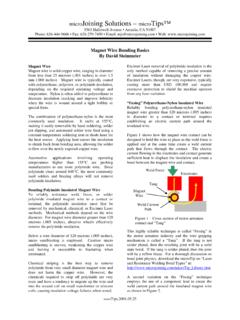
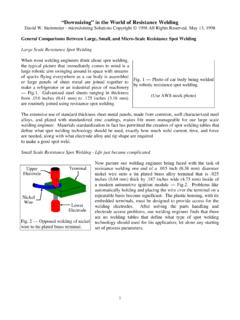
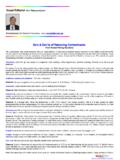
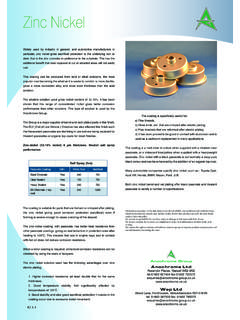
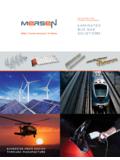
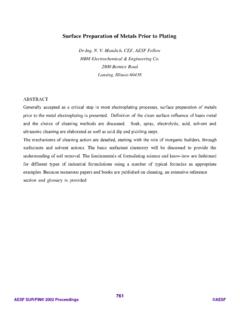
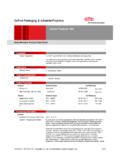
![WELCOME [www.lpsindia.com]](/cache/preview/7/3/4/1/b/7/3/a/thumb-7341b73a085a73e702dcb2a84da66b0a.jpg)
